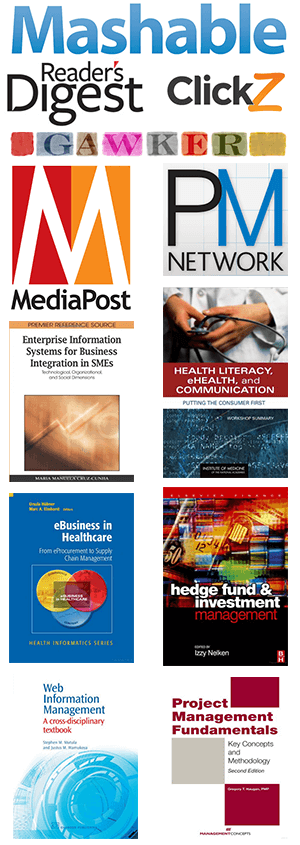Dating Trends That Will Shape the Future of Dating and Relationships

Technology, shifting social behavior, and global concerns are reshaping how people connect. The way relationships form and progress is changing. Dating apps still lead in how couples meet, but newer patterns are pushing dating far beyond swipes and bios. From algorithmic influence to climate concerns, current patterns highlight where dating is heading next.
Small Moves, Real Signals
More people are focusing on smaller, more personal expressions of care. Curated playlists, daily texts, and sharing memes are now seen as markers of affection. In one recent data set, 86 percent of singles report using “micro-mance” gestures to show interest. These actions feel more manageable and less performative, especially for younger daters. Platforms like Bumble show that prompts asking about meaningful actions now outperform appearance-based ones. While more than half of women identify as romantics, over one-third say they are not receiving enough intimacy in their dating lives.
This lack of connection is prompting new dating tool features. Apps are testing personalized suggestion tools tied to daily habits or interests. Hinge is adding AI-generated date ideas to help spark connections based on more than looks or location. These changes support more natural interactions rather than scripted conversations.
Future on the First Date
“Future-proofing” is now part of early dating. In one study, 73 percent of women reviewed career sustainability in matches. Financial habits, retirement goals, and even views on homeownership are now featured earlier in dating talks. Many daters under 35 say that planning for climate risks and economic shifts matters as much as emotional compatibility.
Of surveyed users, 68 percent ask about emergency preparedness or eco-behaviors before meeting in person. Tools on some platforms now highlight environmental impact or allow users to display disaster readiness plans. People look for shared life approaches, not only shared interests.
Real-life and Digital Blends
Instagram is no longer a background tool. Direct messages, Close Friends lists, and Story reactions are replacing formal dating apps for many. Story likes function as signals of interest. About 31 percent of Gen Z users say they've used private stories or targeted posts to grab someone's attention.
At the same time, apps are layering in tracking features. The ability to view connection summaries and identify past talking patterns is replacing simple match counts. Bumble's “dating wrapped” tool shows users their yearly activity and helps adjust their filters. Sixty-three percent of users report using these tools to refine match goals.
Varied Roads to Connection: Embracing Unconventional Relationship Paths
Modern dating is no longer tied to a single formula. People are choosing paths that suit their needs, values, and lifestyles. While some turn to serious compatibility tests and long-term goal alignment, others explore more flexible, interest-based matches through platforms tailored for shared hobbies, career stages, or even age gaps. The growing use of platforms like gaming-based communities and unique relationship models, including arrangements found through a sugar dating app, shows how preferences today vary widely.
This openness to choice is changing how people define success in relationships. For instance, many now view platonic life partnerships or long-term dating without cohabitation as valid goals. Community-based meetups, dating through fandom channels, or apps built around creative expression also support this change. These options help make room for people to form bonds in ways that feel natural, rather than expected.
New Gender Roles, New Conversations
Stereotypes tied to romantic roles are less fixed. In the United Kingdom, 36 percent of daters actively question traditional behavior linked to male roles. Emotional openness, co-planning, and non-hierarchical choices are now seen as more attractive. Some relationships focus more on companionate models than labels. About 58 percent prefer maintaining separate homes in long-term relationships.
Women today form stronger relationship connections with male friends. Data shows that 31 percent now confide more in platonic male friends than romantic partners when seeking support. This shift encourages healthier expectations and slows the rush to define a relationship early.
Social Media First, Apps Later
Gen Z no longer views dating apps as the only viable meeting space. Many prefer connecting through shared hobbies, college groups, or smaller platforms. In fact, 61 percent say they'd rather meet someone during events or through games than through apps. Yet many still combine tools.
This generation toggles between platforms. A connection might start through a meme exchange on Instagram, follow through on TikTok DMs, and end with a date scheduled by text. Surveys show that 58 percent of modern couples map their relationship back through three or more platforms before meeting in person. This shuffling of modes creates a layered but sometimes draining effort to maintain engagement.
At the same time, app fatigue is growing. Data from Wingman suggests that 78 percent of users under 25 delete dating apps within three months of use. That drop-off does not mean the desire for connection has lessened. Instead, younger daters say they want to reduce convenience-based matching and focus on meaningful discovery. Video dates, often used as early filters, are now preferred by 65 percent, due in part to rising costs tied to in-person meetings.
Online Dating, Still the Norm
More than half of engaged couples today report meeting online. Niche platforms that highlight hobbies, shared interests, or communities tied to religion or upbringing have seen a growth boost.
Daters are no longer casting wide nets. Many choose to focus on smaller groups where their core values are already understood. Among these, platforms that lean into pet ownership, gaming habits, or environmental causes report higher long-term connection rates. Fandom-based matching, vinyl listening parties, and vintage hot sauce meetups are growing, often beating generic app first dates in chemistry match-up scores.
Seeing Everything, Saying It Early
There is a visible move toward more direct communication. Loud looking—the decision to share dating goals, expectations, and dealbreakers openly—is embraced by over two-thirds of daters. That means listing housing choices, parenting views, or political alignments directly in profiles or within the first three interactions.
This reduces later disappointment for many. However, some daters say the upfront tone creates added pressure. About 63 percent feel uncertain navigating lists of expectations and non-negotiables. Though honesty is valued, abrupt filters might intimidate potential matches. Experts suggest using these disclosures to start conversations rather than set immovable boundaries.
Physical Meets Still Matter
Despite digital tools becoming more advanced, real-world chemistry is still a priority. App designs now support faster transitions to offline dates. Hinge and Bumble both show higher match retention when dates happen within the first seven days of contact. Real-time meetups resolve ambiguity faster and help daters determine if text exchanges match physical behavior.
Still, expectations for in-person meetings have changed. Splitting checks early on, mutually planning hangouts, and casual spaces like coffee shops or group settings help ease the experience for new daters. The goal is less about grand gestures and more about quiet steadiness.
Attention Fatigue in Dating
Swiping fatigue is real. Psychological studies show that most users can only assess around five profiles before their attention and quality judgment start to drop. Early swiping activity lights up interest patterns, but over time, the same attention habits fail to produce satisfying results. Daters often juggle multiple matches, with some managing as many as five chats at once.
In response, many people are shifting to single-conversation dating. This newer pace encourages one thorough chat at a time instead of constant multitasking. Feedback from slow daters shows a 40 percent drop in emotional burnout and better report rates on date success.
Conclusion
Modern dating is becoming more structured and self-aware. AI tools, future-conscious planning, and efforts to slow down are all part of how people now find and maintain romantic connections. Love is no longer one-size-fits-all. It's shaped by global pressure, shared living choices, and personal habits. Connection may start in many places, but it's the daily effort and open communication that hold relationships together.
839GYLCCC1992




Leave a Reply